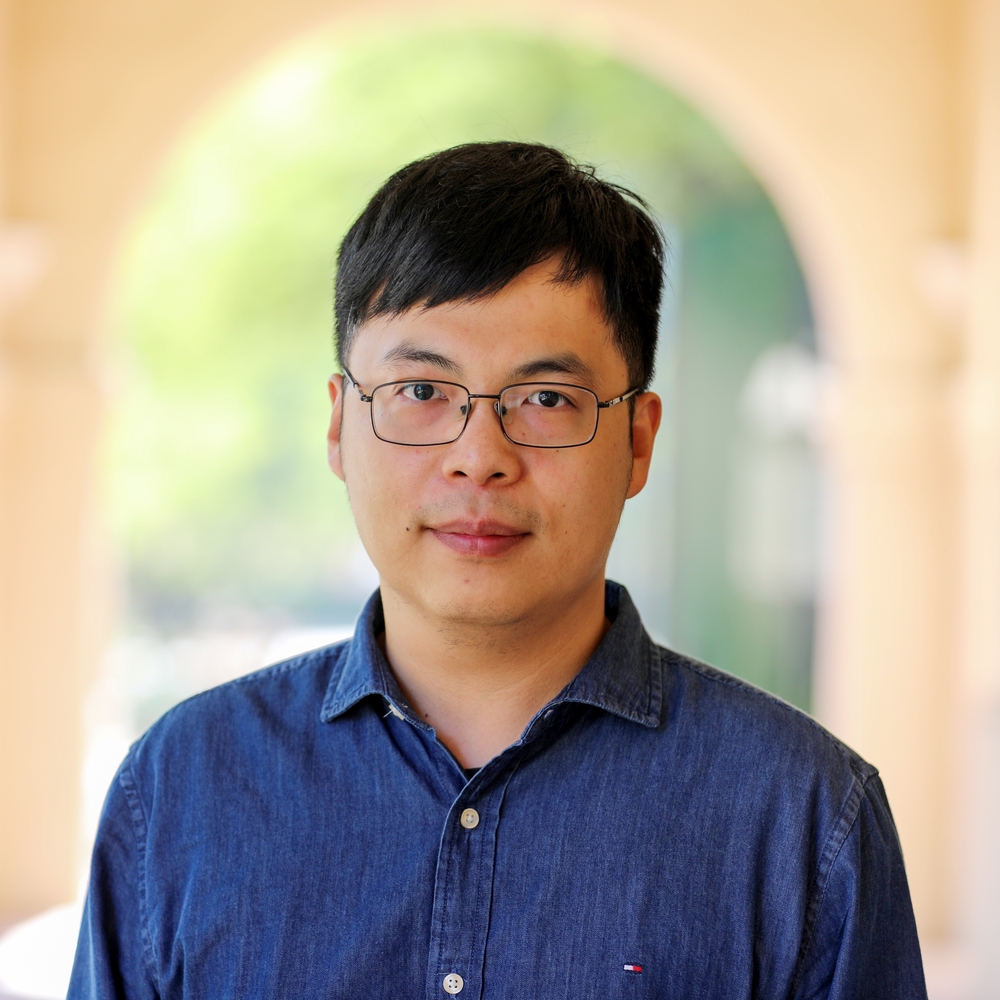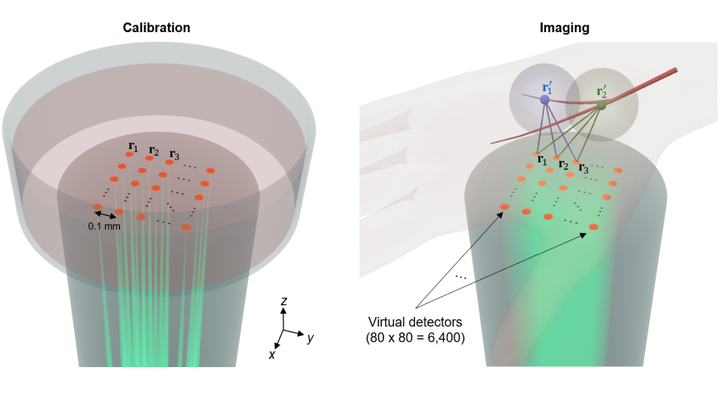Abstract
Techniques for imaging haemodynamics use ionizing radiation or contrast agents or are limited by imaging depth (within approximately 1 mm), complex and expensive data-acquisition systems, or low imaging speeds, system complexity or cost. Here we show that ultrafast volumetric photoacoustic imaging of haemodynamics in the human body at up to 1 kHz can be achieved using a single laser pulse and a single element functioning as 6,400 virtual detectors. The technique, which does not require recalibration for different objects or during long-term operation, enables the longitudinal volumetric imaging of haemodynamics in vasculature a few millimetres below the skin’s surface. We demonstrate this technique in vessels in the feet of healthy human volunteers by capturing haemodynamic changes in response to vascular occlusion. Single-shot volumetric photoacoustic imaging using a single-element detector may facilitate the early detection and monitoring of peripheral vascular diseases and may be advantageous for use in biometrics and point-of-care testing.
Publication
Nature Biomedical Engineering, vol. 8, no. 6, pp. 712-725

Assistant Professor of ECEE and BME
I am an Assistant Professor of Electrical, Computer & Energy Engineering (ECEE) and Biomedical Engineering (BME) at the University of Colorado Boulder (CU Boulder). My long-term research goal is to pioneer optical imaging technologies that surpass current limits in speed, accuracy, and accessibility, advancing translational research. With a foundation in electrical engineering, particularly in biomedical imaging and optics, my PhD work at the University of Notre Dame focused on advancing multiphoton fluorescence lifetime imaging microscopy and super-resolution microscopy, significantly reducing image generation time and cost. I developed an analog signal processing method that enables real-time streaming of fluorescence intensity and lifetime data, and created the first Poisson-Gaussian denoising dataset to benchmark image denoising algorithms for high-quality, real-time applications in biomedical research. As a postdoc at the California Institute of Technology (Caltech), my research expanded to include pioneering photoacoustic imaging techniques, enabling noninvasive and rapid imaging of hemodynamics in humans. In the realm of quantum imaging, I developed innovative techniques utilizing spatial and polarization entangled photon pairs, overcoming challenges such as poor signal-to-noise ratios and low resolvable pixel counts. Additionally, I advanced ultrafast imaging methods for visualizing passive current flows in myelinated axons and electromagnetic pulses in dielectrics. My research is currently funded by the National Institutes of Health (NIH) K99/R00 Pathway to Independence Award.
